Death of Ariki’s daughter, an attempt to introduce Christianity to Mangaia
Saturday 3 June 2023 | Written by Supplied | Published in Features, In Depth, Weekend
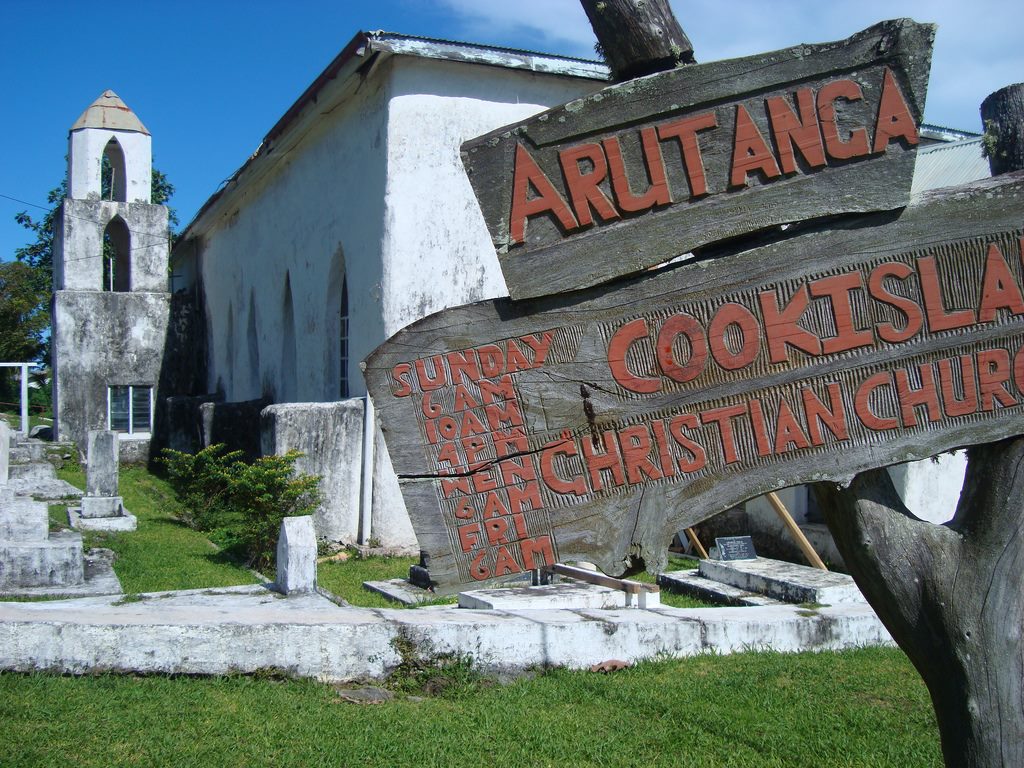
The oldest church in the Cook Islands is the Arutanga CICC church on Aitutaki, built in 1828. 23060218
Historian and author Howard Henry has been fascinated by the birth of Christianity in the Cook Islands for many years. In a weekly series, Henry chronicles the arrival of Christianity to the Cook Islands and its role in building the nation. In his fifth article he talks about how Aitutaki’s Tamatoa Uma-tetiki Ariki embraced Christianity and the first attempt to introduce the Christian faith to the people of Mangaia.
A few days after Faaori left Aitutaki in April 1822, a situation developed that was to be a major turning point in regard to the consolidation of Christianity on the island.
It all started when the most beloved daughter of Tamatoa Uma-tetiki Ariki became ill.
While her father, and many others, were tending towards changing their “Religious Allegiance” and embracing the Christian faith, the daughter of this Ariki refused to consider such a change. She then went with a group who still embraced “heathenism” and so began to take part in an idolatrous feast that was full of old rituals.
Read more:
- ‘The Spirit of God is forever present … everywhere – all the time’
- Seeds of Christianity: The Gospel Pioneer to Aitutaki
- ‘They called this island Wytootakee’
- Christianity created a Nation: The arrival of the Gospel
- Spreading the Gospel of history
- ‘You’ve been worshipping nothing but pieces of wood’
- Letter: Living under God’s blessing
- ‘Let us worship but one (true) God’
After the idolatrous feast had been going for some time, the Ariki’s daughter became seriously ill. Her condition soon deteriorated and despite all the efforts of the various Ta’unga, the young woman, so beloved by her father, eventually succumbed to her ordeal and died.
That single event changed the course of history.
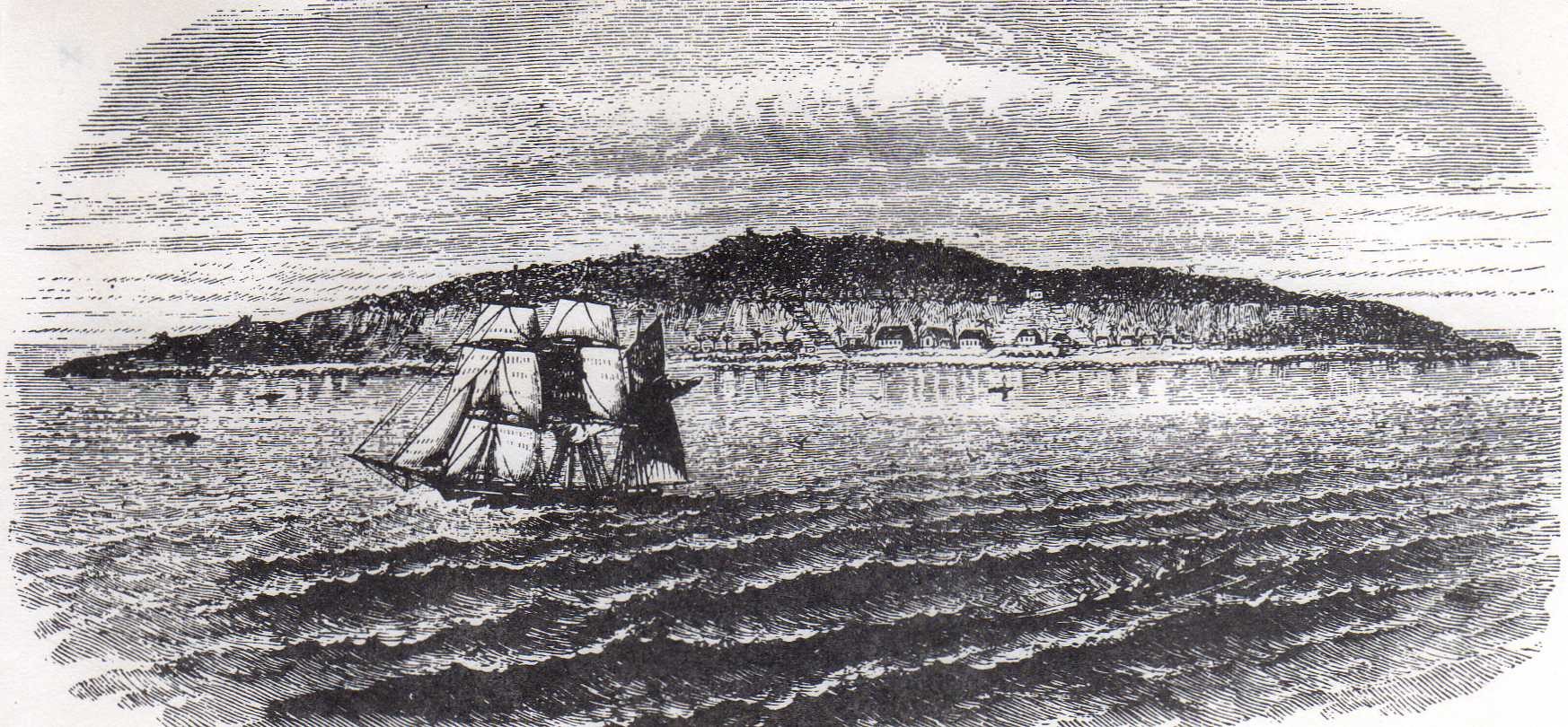
A Mission Ship leaving the island of Mangaia. (Source: “From Darkness to Light in Polynesia”, by Rev. William Wyatt Gill, LL.D. Published by William Clowes and Sons Ltd., London, England, 1894)/23060211
Tamatoa Uma-tetiki Ariki blamed the idolatrous feast for her death. He blamed all those associated with the traditional gods for causing his most beloved daughter to die. The Ariki took the view that it was the traditional gods who had taken his daughter from him. He also took the view that it was those same gods who were responsible for causing him so much grief, pain and sorrow.
On that basis Tamatoa Uma-tetiki Ariki denounced idolatry and all its manifestations.
He then embraced Christianity and so changed his “Religious Allegiance”. The Ariki took the view that when his daughter needed protection from the traditional gods at the time of her illness, they abandoned her and in the process they had abandoned him as well.

Fisherman’s God From Rarotonga, Cook Islands, Polynesia, possibly late 18th or early 19th century AD. The manufacture of these figures declined with the introduction of Christianity to the Cook Islands in the early nineteenth century. Missionaries actively discouraged their use. 33 x 15.5 x 14 cm. © The Trustees of the British Museum. 23060219
So Tamatoa Uma-tetiki Ariki declared the rest of his tribe would now embrace Christianity. He ordered one of his family members to burn his “Marae” at Vai Kuriri. He announced the total rejection of the god Tangaroa and the various other gods. He then told Papehia that his heart was now ready to receive the Lord.
Once Tamatoa Uma-tetiki Ariki had done that, then most of his tribe at Arutanga did so as well. They then changed their “Religious Allegiance” and started to take seriously the Christian doctrines that Papehia and Vahapata were constantly talking about.
Papehia told Tamatoa that all his carved idols should be brought to him so they could either be destroyed, or sent back to Raiatea for destruction by the European Missionaries over there!
What Papehia and the other “Native Teachers” did not know was that these carved images were not destroyed on Raiatea. Those items of good quality were later shipped back to England where most of them were sold while others were placed in the London Missionary Society Museum. The proceeds from those artifacts sold were then used by the London Missionary Society to help off-set the costs of their missionary work in the South Seas.
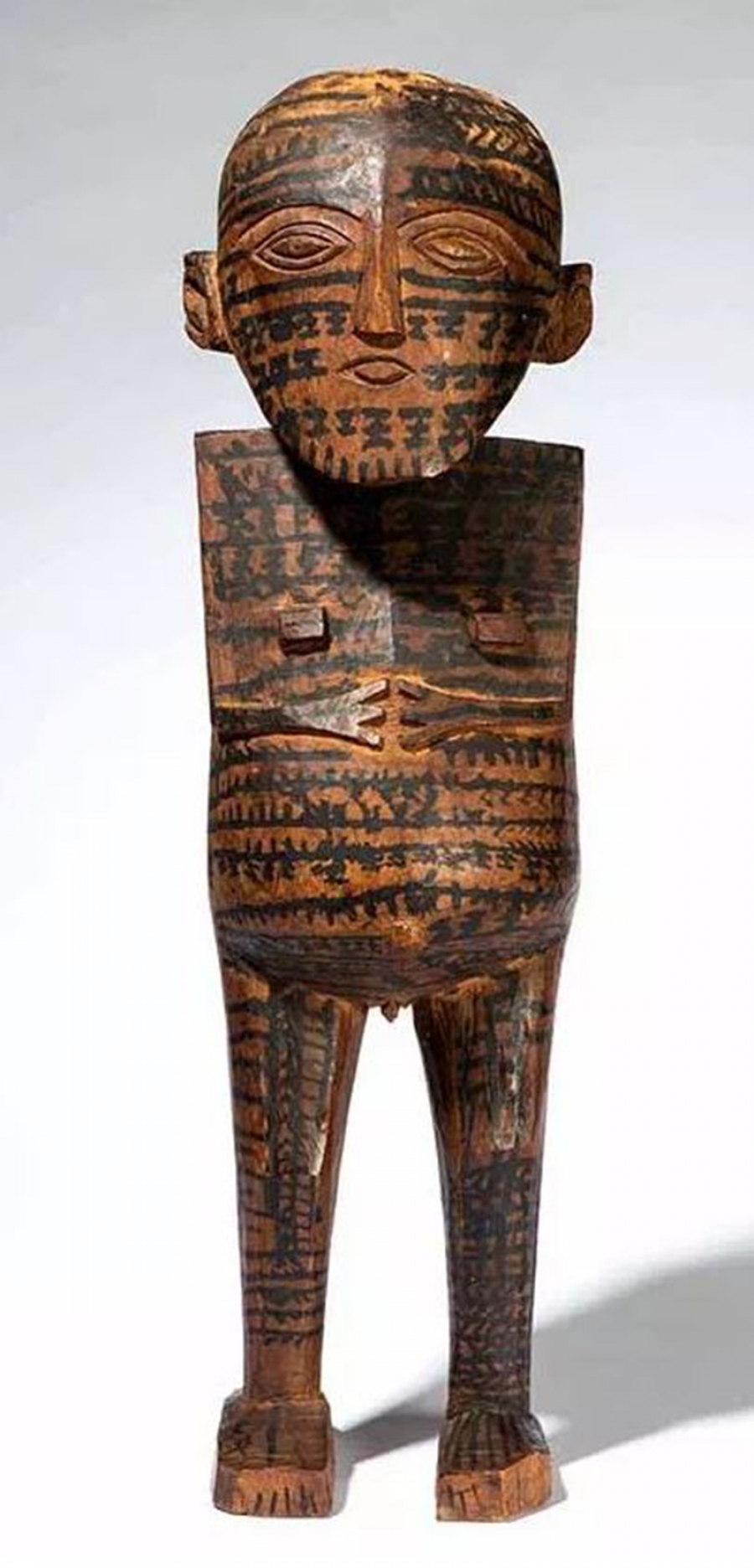
This female tattooed figure from Aitutaki dates back to the1820s. It was acquired by the Five Continents Museum in Munich, Germany, in 1825. 18091812
In the days that followed, the momentum of Christianity continued to accelerate, but was confined mostly to the tribe of Tamatoa in the District of Arutanga.
Work then began on building the first Chapel. In a short time, the Christian population managed to construct a Chapel that was 200 feet long and 30 feet wide. It was certainly the largest building ever built on the island.
Once the Chapel had been completed, it was time to start building houses and the first house to be built was a home for Papehia and Vahapata. Once that had been finished, people then started building homes of their own using the same construction methods.
So not only did Papehia and Vahapata bring a new religion and a new way of life to Aitutaki, but they also brought a new way of building houses. The “Native Teachers” also taught people how to make furniture such as tables, chairs and beds out of local materials. In this way the knowledge these two men brought to Aitutaki resulted in a major improvement in the way the Christian population of Aitutaki lived their day-to-day lives.
In due course Faaori returned to Raiatea.
There he reported to Reverend John Williams about the two “Native Teachers” he had left on Atiu. He also told him that Papehia and Vahapata were making good progress on Aitutaki. But the most significant news Faaori had was in relation to Rarotonga. The Missionary was told there were four people from that island living on Aitutaki who had since been converted to the Christian faith.
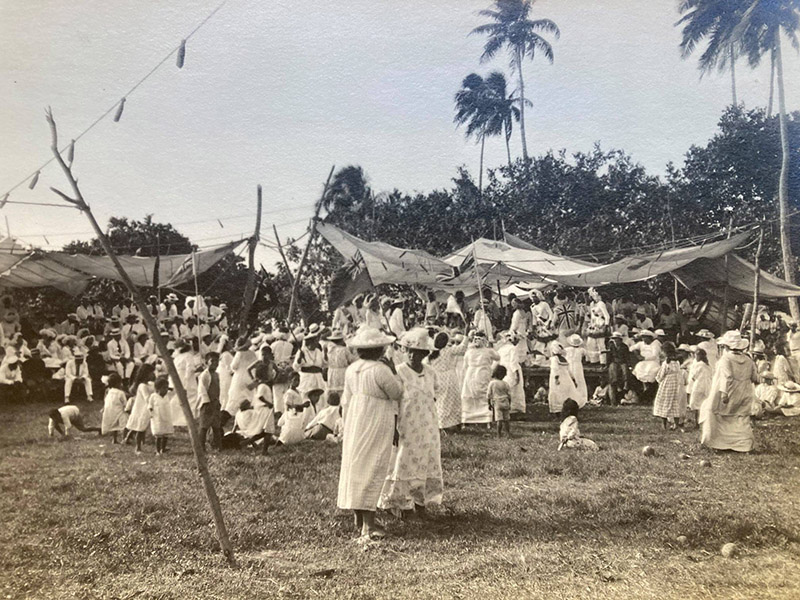
Aitutaki Gospel Centenary Celebrations 1921. COUNCIL FOR WORLD MISSION/21102214.
In addition, Faaori gave Rev Williams a letter from Papehia which said these individuals knew the way to Rarotonga. Papehia also wrote that they wanted to return and take the Gospel back to their home island along with several “Native Teachers” as well.
Rev Williams, like many others on Raiatea, had heard about Rarotonga. But no one actually knew where it was. To then be told by Faaori there were several people on Aitutaki from that island, who had been converted to Christianity and knew which direction to take to reach Rarotonga caused great excitement for the Missionary.
In early July 1823 Rev Williams left Raiatea with a plan being to call at Aitutaki in the first instance. From there he intended to go to Rarotonga in the hope of placing two “Native Teachers”. After that he planned to go to Mangaia with the same objective and after visiting his teachers on Atiu he scheduled a visit to Manuae in the hope of leaving two “Native Teachers” there as well.
Travelling with Rev Williams at that time were enough “Native Teachers” to meet all those objectives.
In early July 1823 the Mission Ship reached Aitutaki after a voyage of five days. The vessel was immediately surrounded by dozens of canoes that were full of people. The captain’s order for all canoes to remain well away from his ship was instantly obeyed.
Rev Williams then called out over the flotilla of canoes for a Chief from among their number to identify himself. The person who did so was Tepaki. He was then invited to step on board the Mission Ship.
In due course Papehia and Vahapata came out and boarded the Mission Ship. They reported to Rev Williams on their progress and some of the achievements they had made. Papehia told the Missionary that a Chapel had been built and was awaiting his arrival to officially open it.
Later that day the Missionary, along with Rev Robert Bourne, their respective wives and entourage went ashore and landed on Aitutaki. The person who escorted Rev Williams and his entourage to land was Tepaki.
With regard to the new Chapel, the Missionary said that he would open this building during a special Church Service which Papehia would organise for the following morning.
Next morning, Rev Williams and his entourage landed once again and the Church Service began a short time later. Rev Robert Bourne conducted the first prayer and Bible Reading after which hymns were sung by those who had just arrived from Raiatea.
Rev Williams then gave the Sermon based on the text from John, Chapter 3, verses 14-16 …
“As Moses lifted up the bronze snake on a pole in the desert, in the same way the Son of Man must be lifted up, so that everyone who believes in him may have eternal life. For God loved the world so much that he gave his only Son, so that everyone who believes in him may not die but have eternal life.” (Source: “A Narrative of Missionary Enterprises in the South Sea Islands”, by John Williams. John Snow and Co., London, England, 1837)
Rev Williams met Tepaeru-Ariki and the others from Rarotonga. These people told him of their desire to return to their home island and be part of the movement to get Christianity established there as well. The Missionary agreed to take Tepaeru-Ariki and the others to Rarotonga.
Rev Williams and his entourage from Raiatea then left Aitutaki and went in search of Rarotonga. They also took Tepaeru-Ariki, Mata Kavaau, Tairi and Teiro, the two stranded fishermen from Takitumu, as well as Tamatoa Uma-tetiki Ariki and Papehia. The Missionary left Mataitai on Aitutaki as a replacement to work with Vahapata.
In order to locate Rarotonga, the Captain of the Mission Ship relied on the general directions given to him by those who had originated from that island. It is obvious the directions they gave the skipper were incorrect because the island was never found. Despite an intensive search that lasted several days, Rarotonga was not located.
In the end Rev Williams decided to abandon his search for Rarotonga and so instructed the skipper to head for Mangaia instead. This island being first located and charted by James Cook during his Third Voyage to the Pacific in late March 1777.
Soon after the Mission Ship arrived at Mangaia, two canoes came out through the reef and approached this vessel. After much beckoning and enticement, one man eventually climbed on board the vessel. But he appeared quite agitated and nervy.
In the discussions that followed, Rev Williams told this man that there were two “Native Teachers” on the Mission Ship who were from Raiatea. The Missionary said that these two men were willing to go ashore with the Gospel and therefore bring Christianity to all those who lived on the island.
The man of Mangaia appeared quite excited to hear this and clearly indicated his approval for this to happen.
And so a short time later, Papehia took two “Native Techers” and their wives ashore with a view to getting them settled on the island before Papehia intended to return to the Mission Ship.
As soon as this group stepped ashore on Mangaia, they were set upon and their possessions were stolen. The two women were dragged away into near-by bushes by several hostile men and the lives of Papehia and the two “Native Teachers” were left hanging in the balance.
The three men were then taken prisoner by a number of men from Mangaia and Papehia had a “tiputa” placed upon his shoulders. A “tiputa” was a garment made out of local cloth which had a hole in the middle through which the head was placed and so the garment would sit upon the shoulders similar to that of a poncho.
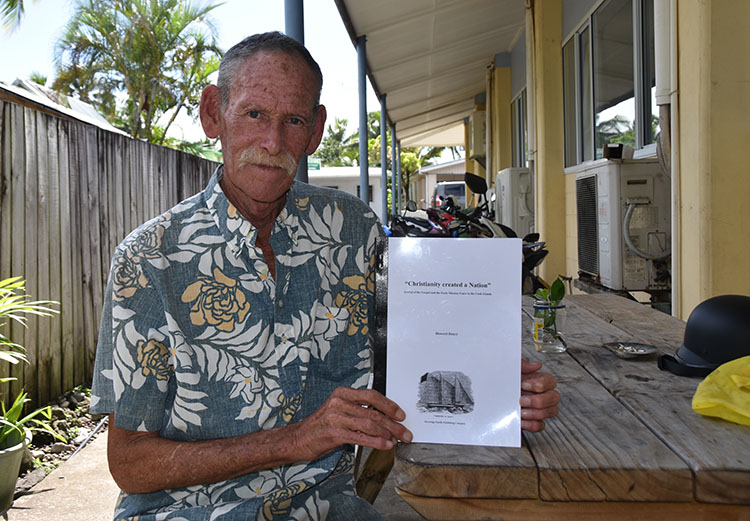
Author Howard Henry with a copy of his book ‘Christianity created a Nation’. 21082021
Once that had happened, the captives then started twisting both sides of the “tiputa” in an attempt to strangle the man to death. However, Papehia stood firm and defiant. He refused to yield to the men who were torturing him.
As the “tiputa” was wound tighter and tighter around his neck, Papehia felt excruciating pain like he had never known before. But he stood his ground, he held his composure, and silently prayed to the Lord for divine intervention in order that he may survive this particular ordeal.
In due course Papehia’s prayers were answered.
Back on board the Mission Ship both Rev Williams and the skipper had been observing through their spy-glasses the events that were unfolding on the shore.
They had seen what had happened to the two women and they could see what was happening to Papehia.
The Captain then ordered the vessel’s small canon to be loaded and made ready to fire. Eventually the ship’s cannon was loaded and then fired a shot that made a very loud explosion which was clearly heard ashore. That sound brought an instant reaction from the kidnappers. It took them all completely by surprise.
As a result of the canon explosion, the two women were able to free themselves and emerged from behind the bushes, while Papehia was able to free himself from the dreaded “tiputa”.
This group then made a frantic dash for their boat as a second cannon-shot was fired from the Mission Ship. This caused the men of Mangaia to react with an even greater sense of fear and disorientation. Papehia and his colleagues soon reached their boat. They then climbed aboard and pulled away from the shore.
A short time later they crossed over the reef and eventually returned to the Mission Ship.
By the time Papehia and his colleagues boarded that vessel, Rev Williams had already concluded it was too dangerous to make any further attempt to leave any teachers on Mangaia. Another attempt would be made at some later time to place “Native Teachers” there.
So the Mission Ship left Mangaia and headed for Atiu with only one “thing” having been achieved through this, the first Missionary attempt to introduce the Christian faith to the people of Mangaia.
This being that Papehia got a very sore neck. It was a very sore neck indeed … apparently!
References
John Williams: “A Narrative of Missionary Enterprises in the South Sea Islands”, Published by John Snow and Co., London, England, 1837.
Papehia Manuscript: “An Account of the coming of the word of God to Rarotonga”, Polynesian Society, Wellington, NZ, 1930.
Howard Henry: “Christianity created a Nation”, Sovereign Pacific Publishing Company, Rarotonga, Cook Islands, 2021.














































